Are you all pumped up to ride a PWC for the very first time and on the hunt for some new-rider tips? Well, guess what? You’ve landed in the perfect spot! I’ve got a treasure trove of tips and tricks, all gathered from years of teaching folks how to ride.
I’ve been in the shoes of many new riders, witnessed their common challenges, and answered countless questions along the way. I totally get it; it can be pretty nerve-wracking when you’re just starting out. But don’t fret because with this post, we’re gonna wipe away those fears and have you cruising the waves in no time!
Alright, let’s kick it off with some of the key bullet points to get you started…
Required Equipment To Drive
- Life jacket for each person on the craft.
- Coast Guard approved fire extinguisher.
- Whistle or air horn. Best to have a whistle on each life jacket.
- Safety lanyard.
- Registration numbers.
- Mirrors if you pull someone (many craft already have this).
- Keep identification on you in a dry bag like this one here (Amazon Link Ad).
What I Recommend You Get
- A smartphone which can be used for GPS.
- First aid kit.
- Sunscreen.
- Bilge pump or bailer.
- Anchor.
- Skier down flag if you pull someone.
- Shock tube if you pull someone and to avoid sucking up your tow-rope.
- Distress flag.
- Solar Charger.
See the full list of must-have accessories here.
What Not To Do
- Don’t drink and drive.
- Don’t drive after sunset.
- Don’t be stupid.
- Don’t start your watercraft in less than waist-deep water.
- Never carry more people than the limit on the watercraft.
Please Consider A Boaters Safety Course!
I highly recommend any new riders take a boaters safety course. Some states don’t require it, and others require it for anyone under a certain age.
To be honest, everyone should be required to take the tests because we take a test to drive cars, so why not boats? The test can often be taken online for cheap, and you learn a lot. To learn more about these tests, check out this here
Always Wear a Life Jacket
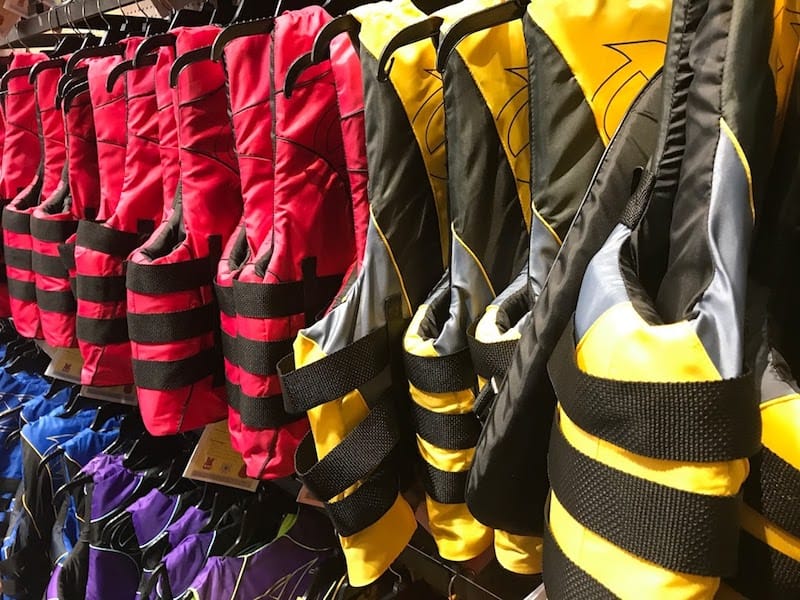
A life jacket is meant to save your life; even if you can swim, still wear a life jacket. A life jacket is for when you fall off the craft, and for some odd reason you can’t swim due to a cramp, getting hurt, or passing out – a life jacket will keep your head above water.
I recommend bright color life jackets if given the option, so you stand out in the water.
Make sure you have a whistle, I like having one attached to all my life jackets. In many states, it’s required that the whistle is within reach of the driver, so don’t hide it and keep it attached to your life jacket at all times.
See this to getting correct fitting life jacket here.
Be Sure To Wear The Correct Gear
Wearing the correct riding gear is very important. I have a more on what to wear. I even have one on what not to wear.
If you think having the correct riding gear is not necessary, then please read the rear warning sticker on your PWC – yeah, the correct bottoms are important.
Get A Dry Bag
Make sure you have proper documents like driver’s licenses, boaters ID, insurance, and some spare cash if you need to get gas. Keep these items in a dry bag.
Don’t forget to take your phone and keep it in the dry box as well. The water looks very different once you’re out there, and you can use your phone’s GPS to give you an idea of where to go.
Pro tip: When you get to the ramp or at your home, pin the location to the phone’s GPS map. This way, when you get lost, just look at that pin on your phone to see where to head towards.
Safety Lanyard
The safety lanyard is the cord that attaches to you and the watercraft. This is a kill switch that turns the engine off if you’re not on the craft.
Make sure the safety lanyard is attached to you when the engine is running.
It’s preferred that the safety lanyard is securely on your life jacket. If that is not an option, you can attach it to your wrist (your owner’s manual will tell you the best place to attach your lanyard).
Don’t be a fool and always have this attached. If you do fall off and did not attach the safety lanyard, the watercraft will drift away from you and can crash into someone else, or it could circle around and hit you.
The PWC Controls
Before heading out, make sure to learn the controls of the watercraft. I have a video below to show you how a Sea-Doo works, but many of the other manufacturers follow similar controls too…
- Know where the on and off buttons are.
- Check gauges before heading off. Make sure you have gas and no check engine lights on.
- Learn the controls of the watercraft, forward – neutral – reverse or if it has brakes, learn that.
- If you have brakes, learn the triggers. The best way to learn is to flip the triggers gently back and forth to get the feel of the craft and learn what they do. It’s best to do this in the middle of the lake or far away from others.
- If you’re new, avoid going into sport mode or using the performance keys.
- The throttle is sensitive, so only give it a little gas.
- Take time to learn the machine. Go through the owner’s manual and learn all the features before you go full power.
The Steering and Driving
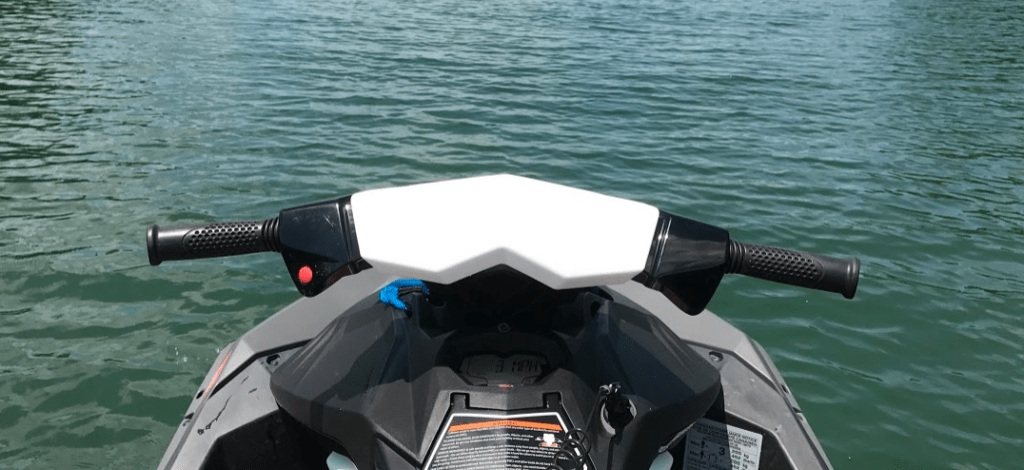
Jet skis are more user-friendly than many people assume, but there are some important considerations.
When you initially start the jet ski, be aware that some models immediately move forward, so brace yourself.
Older models may require throttle input for steering, while newer ones, like Sea-Doo, often come with off-throttle assisted steering.
It’s crucial always to maintain a safe distance from other watercraft, as they can’t maneuver as swiftly as you can on a jet ski. To stay safe, it’s a good practice to assume that other people on the water might not be as attentive or cautious as they should be, so steer clear of potential trouble.
If you have a new PWCs, make sure to follow the engine break-in guidelines for optimal performance.
The Braking and Neutral
Brakes and neutral are not what you think they are when it comes to watercraft.
It’s more common these days to have PWCs with neutral and brakes, but there are still some without them.
The tricky part is that neutral is not like neutral on your car or boat. A PWC has a direct drive, so if the engine is on the impeller to make you move is moving too.
Neutral is a bucket that controls the direction of thrust, and the neutral spot is in between forward and reverse.
Don’t be shocked if the watercraft still moves a little when in neutral.
The brakes are the same bucket, and it doesn’t work like the brakes in your car. The brakes on a PWC will slow you down, but what it’s doing is putting the craft in reverse to slow you down. That is why the brake lever and the reverse lever are the same levers and if you hit the brakes, you’ll slow down and eventually go in reverse.
How To Dock And Load Onto Trailers

Docking can be hard for new riders, but the trick is to go slow. If you have reverse or brakes, then pull the trigger in to slow down and release and then slight tap forward and then hit the reverse to slow down.
You want to creep up and then slow down; you want to be moving so slow that it’s annoying. This slow-moving is what keeps you from hitting the dock too hard. With more practice, you’ll be docking without issues.
If you don’t have reverse or brakes, then before you get to the dock, spin in a small circle with no throttle. This spinning kills your momentum and will take a second for the watercraft to get moving again, and in that second you point to where you want to go and then turn the engine off to coast into the dock.
The last thing you want to do is get to the dock and ask “what should I do” because then it’s too late and you’ll crash. Loading onto a trailer is like docking, just go slow and line it up. I have instructions on loading and unloading here.
Here is a more on what accessories to have for your trailer.
No-Wake Zones
Only idle in no-wake zones. The no-wake zones are the white floating cones at the entrance of a cove or near land and boats.
This is to respect others and to keep waves from damaging boats, and to keep the waves small at the ramps for loading and unloading. Often the water police give the worst tickets at the no-wake zones, so it’s best to follow the rules.
The Waves
Your craft can lift out of the water if you jump waves, and you should brace for impact. Lift yourself up a little bit to help with the hit.
Avoid big boats or high-traffic areas when you first start out.
Even a 24-foot boat can make a big wave, especially if it’s a wake boat. These big waves seem small at a distance but become bigger when your watercraft gets up close to it.
These waves can be scary if you’re not ready for them. Don’t let the wave attack you from the side as you run the risk of rolling over, but attack it head-on and carefully.
What To Do If You Fall Off?
With modern watercraft, excluding Rec-Lite ones, falling off unintentionally is rare due to their size and stability. Overloading can increase the risk of falling, so it’s advisable to choose a watercraft with a reboarding step for easy reentry.
In case you do fall off and the watercraft flips over, follow the rollover instructions at the rear. Leaving a 4-stroke watercraft upside down is not recommended, and the rotation direction matters.
Climbing back on requires upper body strength, and it’s more challenging with smaller crafts. The craft may tilt slightly, but it’s manageable. Use the step for your feet and knees, then straddle the seat to regain control.
Keep in mind that getting back on a watercraft can be tougher than it looks due to being wet and waterlogged. Think of it as climbing out of a pool using only the top rungs of a ladder that moves slightly.
Practice Makes Perfect!
First-time riding, find an empty spot where you can play with the controls before going off.
Ride with friends who have some already and get tips from them. You can often find local riding groups and pick up tips from them too. Just search Facebook for local jet-ski riding groups.
Avoid Sucking Stuff Up
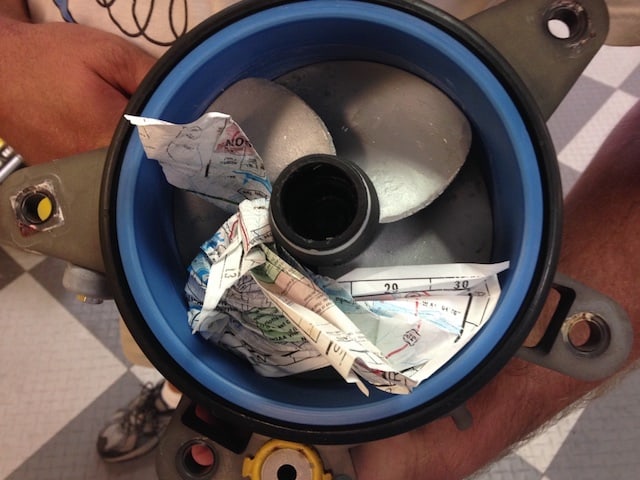
A shock tube is a great tool to have if you do any pull sports. A shock tube will help keep the tow-ropes away from the impeller of the watercraft.
More often than not, if you suck up rope, it will need to be towed in and put on a trailer to remove. Sucking up a rope can ruin the weekend if you’re not careful, and makes getting a shock tube more worth it.
Avoid shallow areas, you’re riding a very powerful vacuum, and it will suck up sand and rocks if you get too close to land. If you see water that is about waist deep, then you need to turn the engine off and then coast in.
Sometimes you will suck up debris that is floating in the water and won’t see it, or your kids might suck something up and won’t tell you. It happens, and training and being more aware of your surroundings will help to lower the chances. Only start the watercraft in waist-deep water, too.
Make Sure To Buy The Correct PWC
Even the slowest watercraft will feel fast to new riders. See this on what jet ski is excellent for new riders.
Sometimes a 3 seater is really a 2 seater for normal-size adults. This goes more for the Rec-Lite categories and a little on the recreation category too.
I’m not a small guy myself, 240 pounds, and have a small Sea-Doo Spark.
If you are larger, you can still ride a watercraft just fine, but I do recommend that if you’re overweight, avoid the Rec-Lite category or 2-seaters of watercraft unless you like getting wet.
If you are overweight, the hardest part of jet-skiing will be getting back on the craft if you fall off.
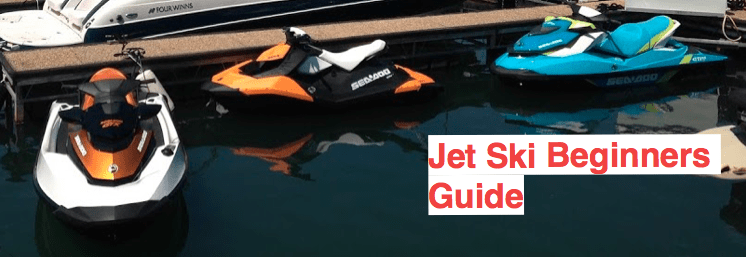
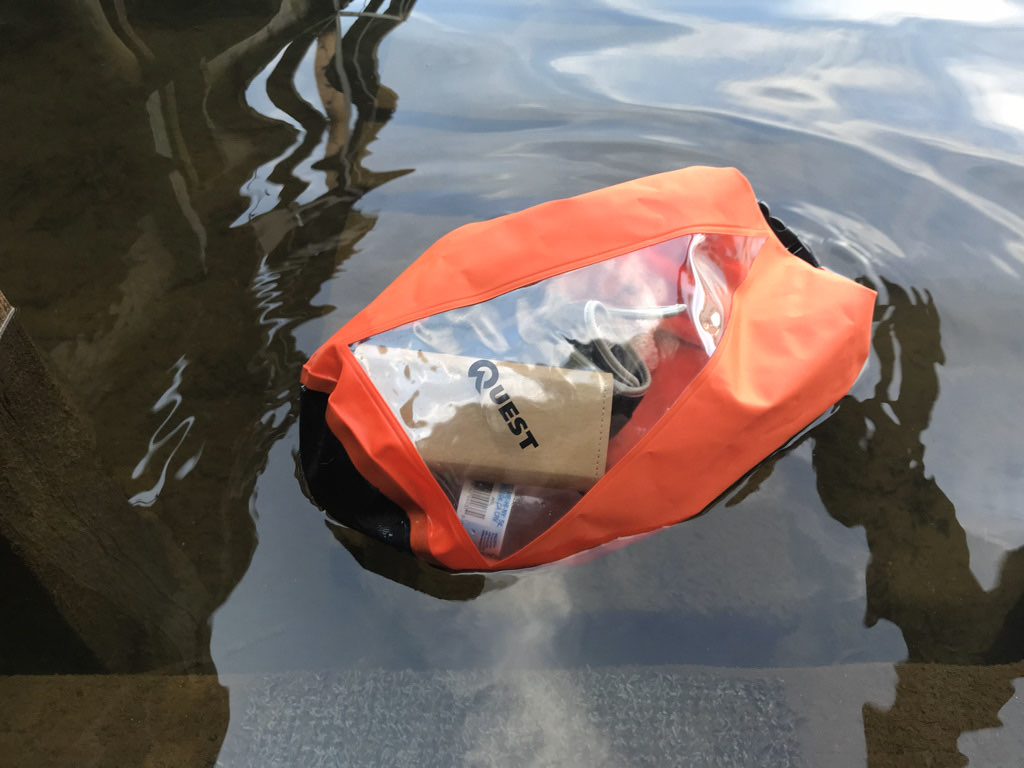
I really like your comment “don’t be stupid.” Just be aware that jet ski operators are the most hated people on the water. That is a fact. I mean absolutely loathed by most boaties. This is because a few selfish idiots are either too stupid or too arrogant to realise that their actions affect others. The easy solution is to simply keep well away from anchored boats and all other people in the water. Especially swimmers and kayaks. it is in your interests to do so because jet skis are being banned in more and more places and this will continue until they are banned altogether. And that is unfair for the responsible jet ski owners.
Thank you for all your tips and information and the Honda Aquatrax info link. My wife and I are in Southern AZ and have a boat (hers) but she doesn’t like to go fast. I don’t like to go slow. Enter two 2006 Honda Aquatrax turbos,(his). Very clean but have sat for a few years and need to be flushed but your buying tips hit spot on. I work on all of your toys, I do not need to be jumping and doing anything young rubber people do. Basic with speed. The convenient part is the Aquatrax take the same oil filter and parts as my 2006 Honda Motorcycle. (bonus)
Thank you for all the jet ski tips. My husband and I are going on a trip soon, and he really wants to ride some jet skis. I really like your tip about making sure to have a dry bag for all of the important items we have. I think that would be a great idea. We will have to make sure we get one before the trip.